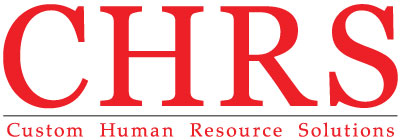5 Key Elements of an Annual Performance Review
May 6, 2017 will be the two year anniversary of my arrival in Georgia and my transition from a part-time to full-time employee at CHRS. I thought about this last week when my manager sent me a calendar request for my annual performance evaluation meeting. I absolutely love the opportunity to talk about myself (yes, I’m a millennial) and the Annual Performance Review (APR) gives me a stage to highlight all the successes I’ve had as an employee. But, this hasn’t always been the case – I’ve worked in jobs where the annual review has been tense and nerve-wracking. In order to have fewer of those tense APRs and more successful evaluations, employers can focus on what we at CHRS refer to as the APR-5, the 5 key elements that lead to a successful APR for employers and employees.
-Kelsey Geist, MBA-HRM, SHRM-CP
CHRS Director & HR Administration
1. JOB DESCRIPTION
It might be a surprise, but a good job description is the best place to start in the annual review process. If you, as an employer, write a description that identifies the key performance elements of the job, the reasons why the job is in place, and the roles that the employee fills within the organization, then the employee should understand their responsibilities on a day-by-day basis. When the annual review comes about, the employer can review the job description and evaluate the employee against the duties and responsibilities listed with the actual duties and responsibilities the employee is performing.
Starting with a job description also allows the supervisor to evaluate how the job has evolved or if the employee is performing a different set of tasks. This gives the evaluating manager an opportunity to evaluate both the job and the employee.
2. GOALS & OBJECTIVE
Just having a job description isn’t usually enough for a manager to evaluate an employee. It might be the case that the employee is fulfilling the role of the job – performing the rote tasks associated with the position. But, is the employee contributing to the company? When an employee starts with an organization, the manager should establish a set of goals and objectives for the employee consistent with a high-performer. These goals should be clear and precise. As an employee increases her or his tenure with the organization, the manager and the employee should establish goals and objectives together. The collaboration between the employee and employer on goals helps an employee understand their role in the organization and how individual performance translates into organization-wide performance.
3. PERSONNEL FILE
Before a manager sits down to evaluate an employee, the manager should consult the personnel file. The file should be updated on a regular basis and should include commentary from the manager regarding actions and behaviors of the employee. The manager should make regular entries and memos in the file when the employee fills in for absent colleagues, takes on additional roles or responsibilities, volunteers for a committee within the organization or takes an active role in a community project, takes a leadership role in training or mentoring other employees. And the manager should make note of slip-ups and failures. When conducting the APR, the manager then has a record of how the employee has acted, performed and engaged within the organization.
4. SELF-EVALUATION
I mentioned above that I love talking about myself and think about the APR as an opportunity for me to tell my story and brag on myself. Unfortunately, many organizations do not ask the employee to contribute to the annual evaluation. Giving a form to employees that allows them to outline their own performance and to tell their own success stories allows for the employer to understand the employee’s perspective. It might also allow for the employer to understand any disconnects between what the employer thinks or understands the role of the employee and what the employee’s understanding is of his or her own role. The self-evaluation may also help an employee highlight success that have flown under the radar.
5. TWO WAY STREET
A typical evaluation process might be for the manager to grab an evaluation sheet, circle ‘meets expectations’ or ‘exceeds expectations’ in five or six categories, circles ‘does not meet expectations’ in a category or two, sign his or her name and hand it to the employee without explanation. I do not recommend that process. Rather, I am a huge fan of the two-way-street approach. The manager should identify his or her understanding of the employee’s performance then turn it over to the employee to lay out their own case. In this situation, the review is much more collaborative. Yes, the manager has a leadership role and a leadership position. But, the two-way-street method allows for more open communication and helps both employers and employees understand the opposing perspective.
In addition to the above, it is important for the manager to schedule uninterrupted time for the meeting with the employee to review his or her performance. As organizational leaders, managers are responsible for taking steps to help employees be successful so this meeting should be considered an important one. Your employee, and his or her contribution to the success of the company, is important as well. Take the time to do it right.
DO YOU HAVE QUESTIONS OR NEED ASSISTANCE IN DEVELOPING A SUCCESSFUL EMPLOYEE EVALUATION PROGRAM?
Please contact Kelsey Geist at KGeist@CHRSonline.com or contact CHRS http://f5k.ee6.myftpupload.com/contact/



